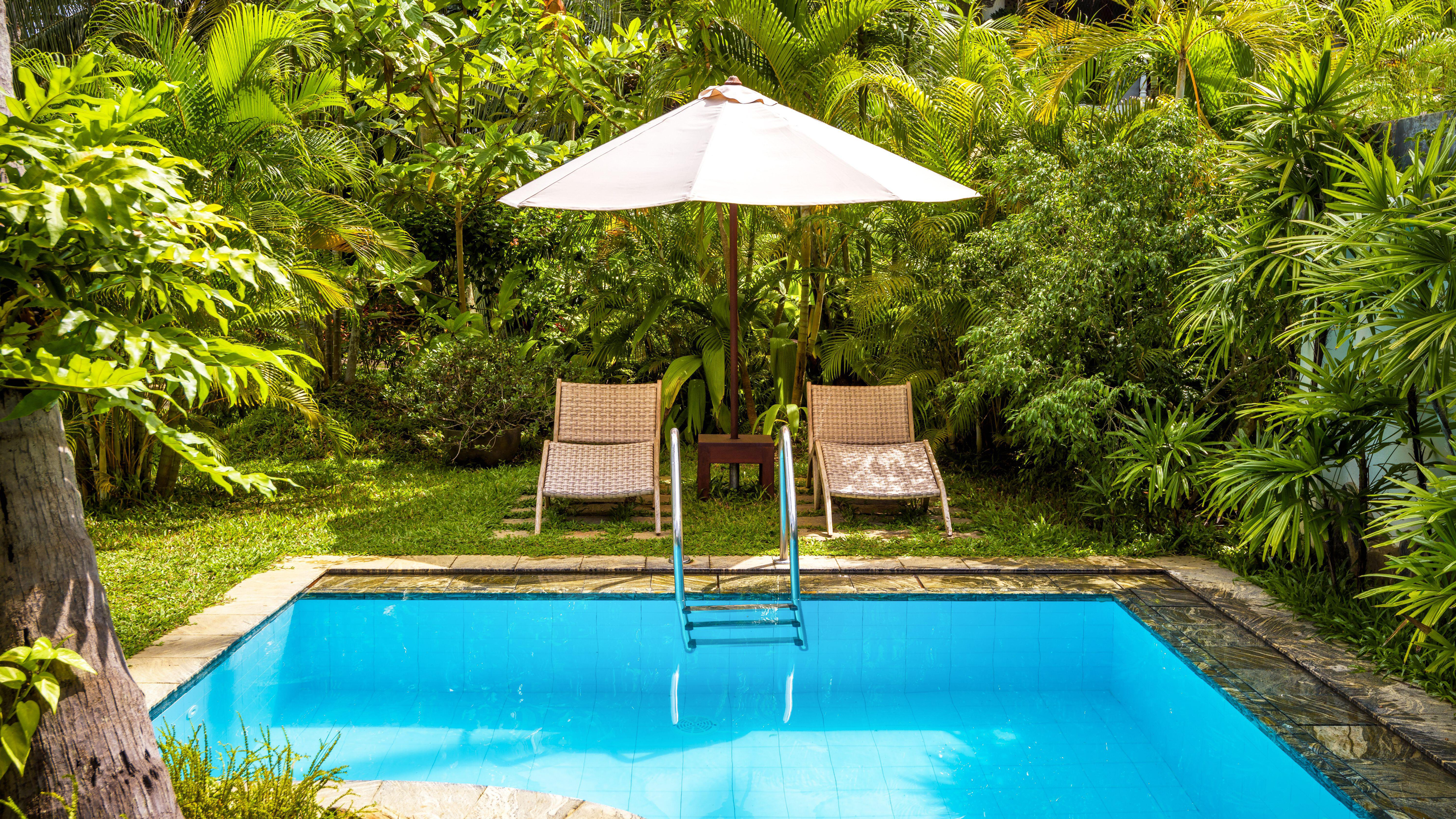
If you want to know how to clean a pool properly, you've come to the right place. Whether you've just had an above-ground pool installed in your backyard and want to keep it in perfect condition, or if you're tending to a neglected pool post-winter, it's always wise to take advice from professionals who know exactly how to make sure that yours is safe and pleasant to use.
Even if you're just researching different types of pools to add to your yard, it makes sense to get up to speed on what keeping your pool clean will involve.
How to clean a pool: a step-by-step guide
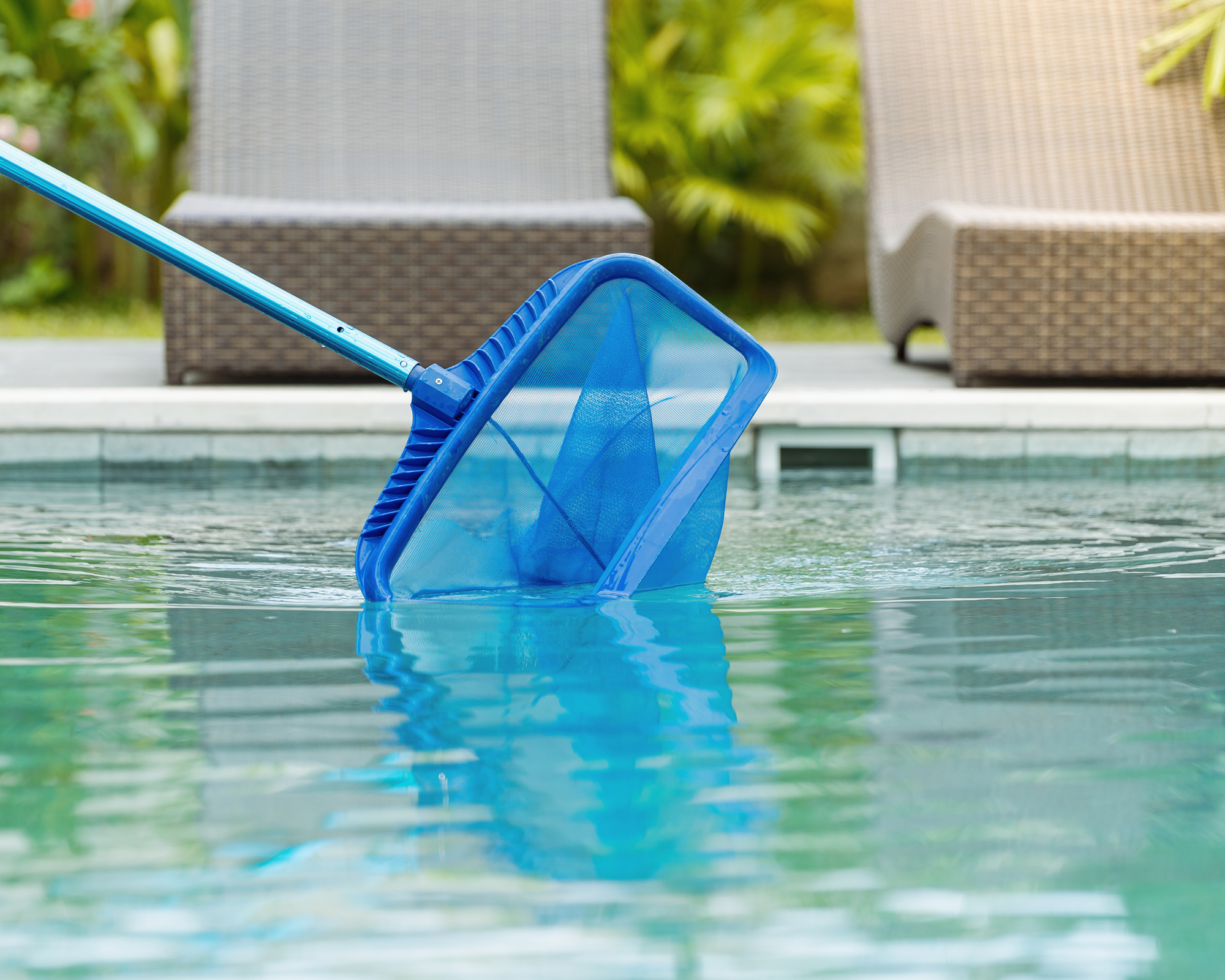
After all, if you've budgeted for the cost of an above-ground pool, you'll know it's a small investment and pools aren't exactly low-maintenance backyard additions either, so you will need to be prepared to do the regular cleaning in order to enjoy that summer splash.
To thoroughly clean above-ground and/or in-ground pools we would recommend picking up the following:
- A pool net
- Pool test strips
- A pool brush
- Pool vacuum cleaners (not always essential)
- A filter cleaner from Amazon
1. Skim off any debris
This is a simple first step that is essential to the success of all the other steps. Adrian Harrison, Director at My Perfect Pool advises to 'start by skimming the pool with a pool net to remove all floating debris.' A pool that's full of floating debris will almost certainly have a clogged filter, so do this regularly.
2. Shock the pool
Harrison explains that shocking the pool involves 'adding enough chlorine to increase the chlorine level to 8-15 ppm. This will kill off algae and other organic matter. Do this at night as most pool shocks do not contain stabilizers, and will burn off when exposed to sunlight. Leave the pool overnight.'
Pool test strips can be bought on Amazon.
3. Use a brush
This is a very important mechanical cleaning step that will help you remove any buildup and algae from the walls of your pool. 'Brush the walls and floor. Using a pool brush, vigorously brush all of the pool walls and the floor to remove scum and algae.' A pool brush can be bought from Amazon and features stiff bristles and a wide shape that makes covering the large pool surface easier.
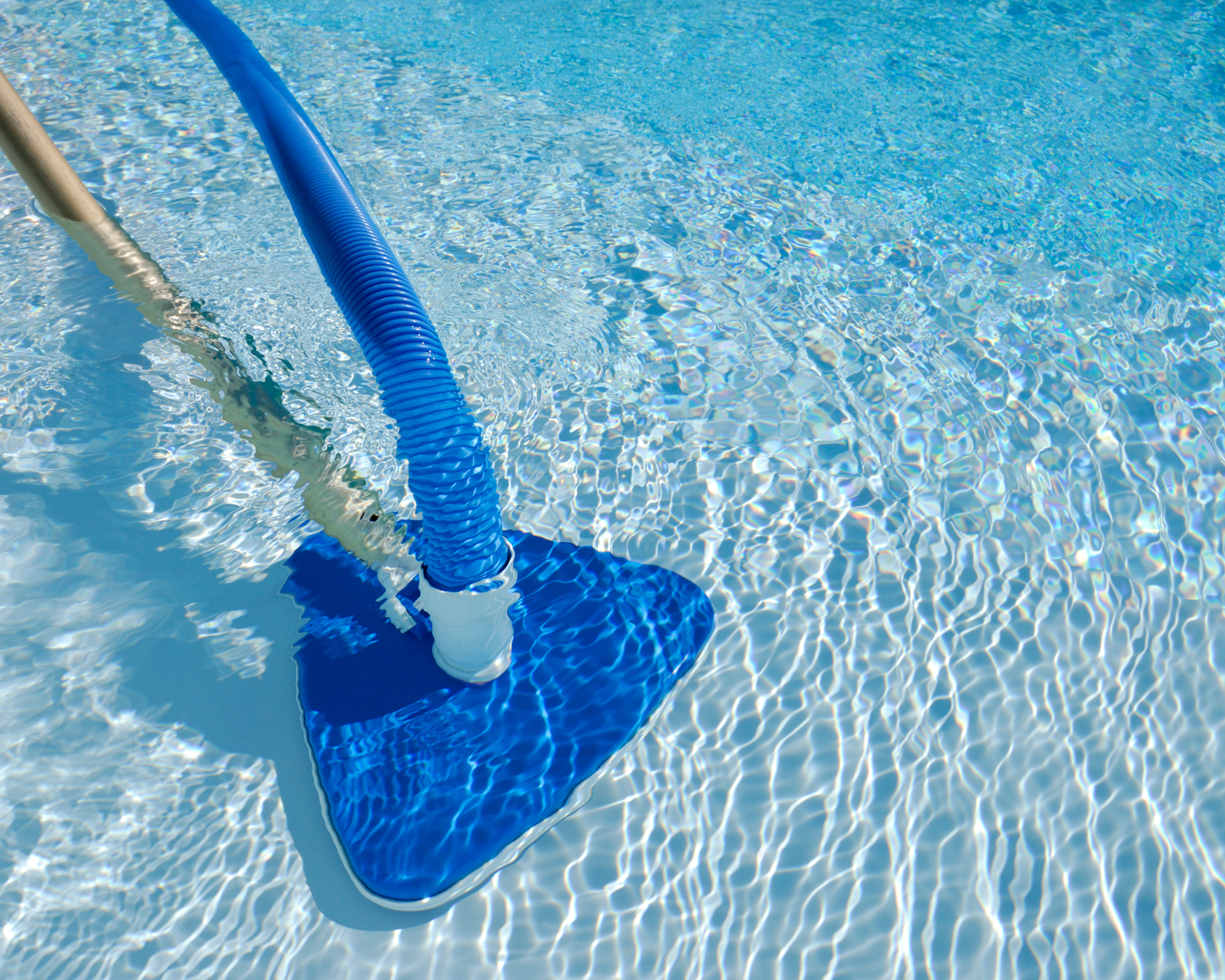
4. Vacuum the pool
Connect a pool vac and set your filter or pool valve to waste and start vacuuming. This will ensure all dirt and debris on the bottom of the pool does not go back into the filter.
Pool vacuum cleaners can be bought on Amazon and vary widely in price and design. A basic pool vac will cost around $200, while a smart, cordless robotic pool vac that's completely hands-off can cost up to $1,000. The model you choose will depend entirely on your budget and how much of the actual cleaning you're prepared to do. The benefit of a robot pool vac is that you can just leave it on to do the cleaning every night, so that every morning you have a clean pool.
5. Clean the pool fliter
Learning how to clean a pool filter is one of the most important steps. First, turn on the filter and leave for 2-5 days until the water clears. You may need to clean out the pool filter several times during this step. Keep an eye on the pressure gauge. When it is about 10 psi higher than usual, clean the filter. You'll need to remove the filter cartridge and clean it with the best garden hose and a spray nozzle. Use a filter cleaner from Amazon to really get all the gunk out of your filter.
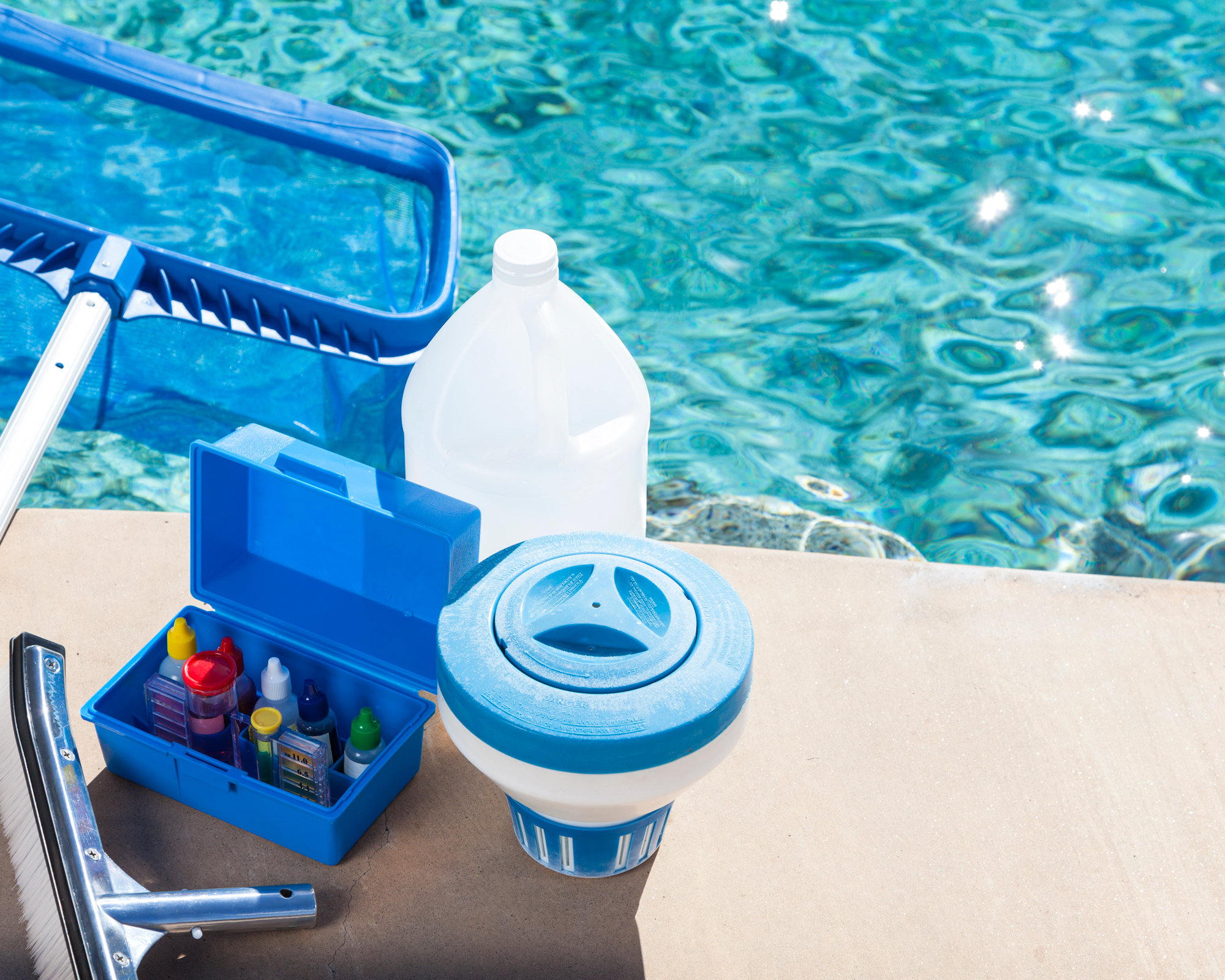
6. Balance out the pool water
Test the water and add chemicals as necessary to get the water balanced again. Chlorine should be 1-5 ppm, pH 7.2 - 7.6 and stabilizer 30-50 ppm.
7. Use a pool cover
Cover the pool with a pool cover when not in use. This will keep out the majority of the dust, leaves, pollen and leaves that land in pools. Without a pool cover, it will be very difficult to keep the bottom of the pool clean.
8. Run the filter for over eight hours a day
The filter removes dust and organic matter from the water. It's essential for maintaining clean water. If cleaning the filter doesn't seem to do anything, it may be time to get a replacement pool filter cartridge. Different pool filter cartridges will have different diameters, so make sure you get a size that's exactly like the one you have at the moment.
9. Make sure there are no leaks
Regularly checking your pool for leaks is very important for keeping it clean. As Reed Johnson, professional pool cleaner and pool leak detection technician at Reed Tile Services, explains, 'most pools get quickly dirty because of leaks as they cause foreign object intrusion that can easily pollute the water and rock the ph level consistency.' It is best to call out a professional if you suspect that you have a leak.
How can I clean my pool without a vacuum?
While a pool vacuum is an important tool for cleaning a pool, you can still clean yours even if you don't have a vac. Harrison recommends regularly stirring up the water with the filter on – 'by agitating or stirring up the water, all the dust and debris that has sunk to the bottom of the pool will be suspended in the water. The filter will then be able to remove this.'
It goes without saying that you should also maintain the correct chemical balance, which will ensure that the water is clean and algae-free longer. The correct chemical balance for a pool is:
- Chlorine - 1-5 ppm
- pH - 7.2-7.6
- Stabilizer - 30-50 ppm
- Calcium hardness - 100-300 ppm
- Total alkalinity 80-120 ppm
How to clean a pool that is out of balance
If your pool water is out of balance, then your best bet is to drain the pool, vacuum it and refill it. Warren Byington, who co-owns backyard maintenance company Backyard Brothers, recommends refilling your pool with 'lean, fresh, balanced water, which requires time.'
No vacuum? There is what pool professionals call the 'drain-and-wash' method: 'drain the pool, power-wash it, and fill it anew. Balance the new, fresh water at the outset so it can be maintained thereafter.'
You really should regularly test and rebalance your pool water – 'Otherwise, getting a pool clean and it going off-balance time and time again creates a repetitive dire situation where aggressive measures, such as draining and washing and refilling, are needed.'
Join our newsletter
Get small space home decor ideas, celeb inspiration, DIY tips and more, straight to your inbox!
Anna is a professional writer with many years of experience. She has a passion for contemporary home decor and gardening. She covers a range of topics, from practical advice to interior and garden design.
-
 How to clean rust from an outdoor grill — get yours summer-ready in 4 simple steps
How to clean rust from an outdoor grill — get yours summer-ready in 4 simple stepsGet prepped for summer and see how to clean rust from an outdoor grill. Our experts walk through everything you need to know for cooking outside
By Andy van Terheyden Published
-
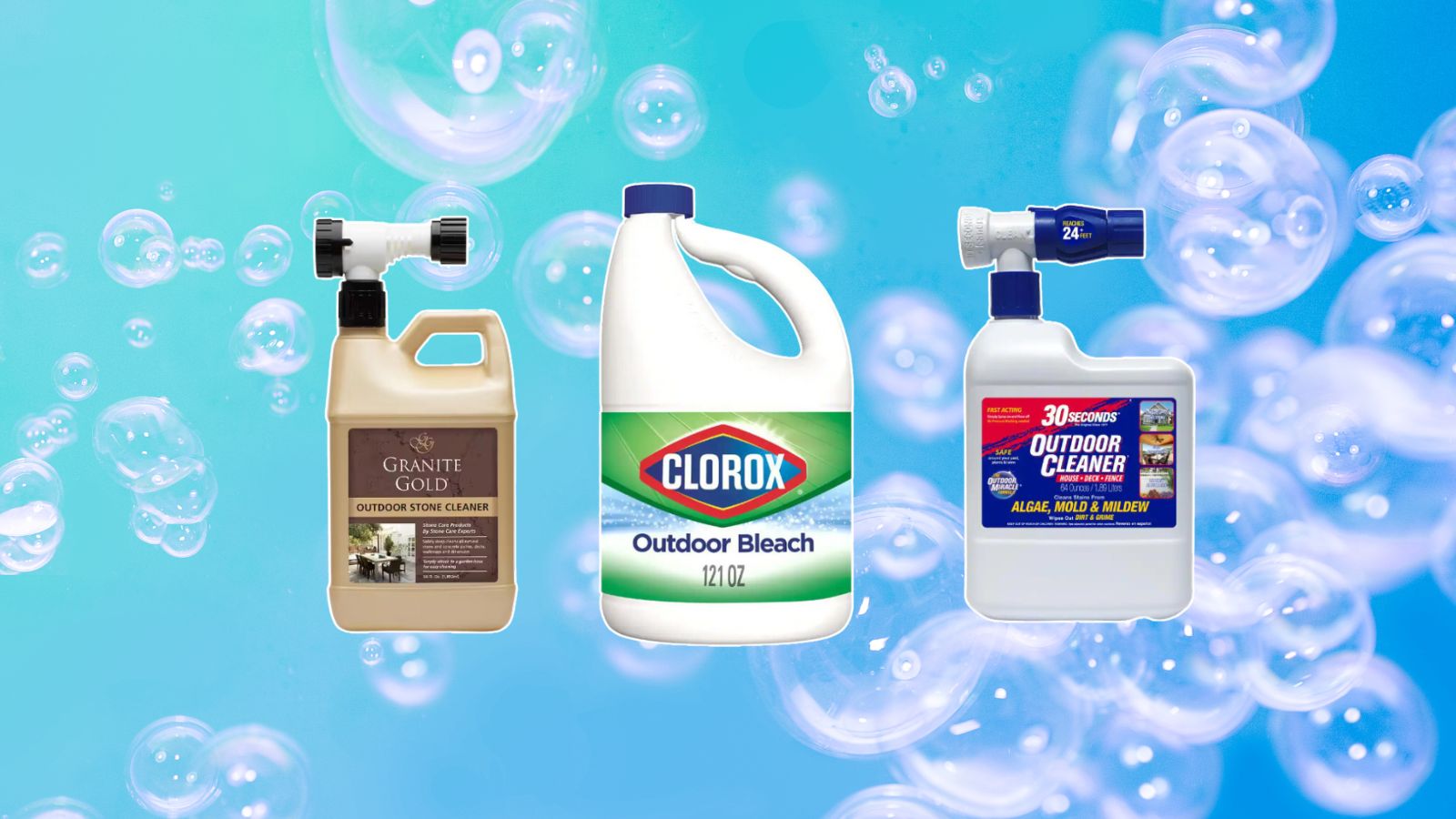 The Home Depot backyard and patio cleaning supplies we're stocking up on before spring
The Home Depot backyard and patio cleaning supplies we're stocking up on before springDon't forget the outdoors when spring cleaning — The Home Depot backyard and patio cleaning buys from $11 will assist with tidying up
By Danielle Valente Published